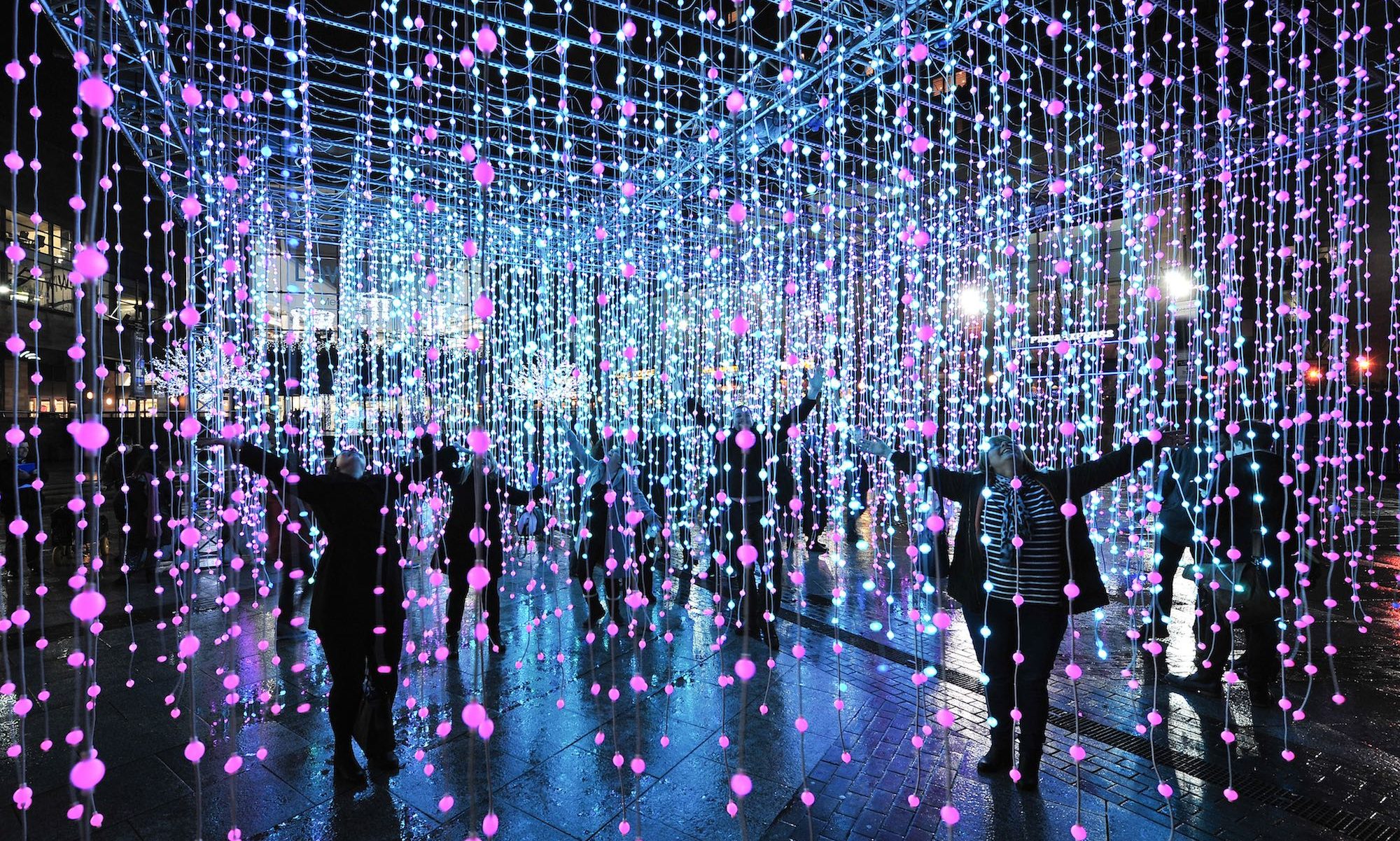Concept
For this piece, I wanted to carve out a little section of the world on a rainy night. I was looking to replace the watery parts of the piece with light, and having it flow between a section of road as well as a central object– a boot– to see the interactions it would have with the light.



Materials and Construction
The materials I used were:
-2 2x2ft Insulation Foam Boards
-28ft of 1/2″ PVC Pipe
-Black and Light Grey spray-paints
-a boot
-7 wire coat hangers
-3 15ft strings of 50 LEDs from Synovia
-Tissues
I first constructed the base out of the foam board, creating an opening to emulate a drain, then making shallow cuts to show the tiling of sidewalk concrete. Finally it was spray-painted black on the street, and light grey on the sidewalk.

The frame was the constructed out of PVC pipe, 4 supports held together a 2x2ft square with 3-way connectors. The wire hangers were bent into wire, then strung across to create a grid on top. This was all spray-painted black.

Finally, I set the scene and placed the lights as shown in the images at the top of this post with tissues covering the denser portions to diffuse the light and have a more continuous flow.
Retrospection and Concluding Thoughts
If I had more time to execute this piece, there are a few things I would like to change. The first and most important would be to increase the density of lights– either by increasing the overall number of lights or by cutting off part of the frame to decrease the overall volume. While the math of how many times I could take each string from the bottom to the top (3 times with a few feet left over) sounded like a lot, once I laid the lights down and moved them around the base to set the scene, I lost a lot of length. If I used a few more strings, I could have used them to focus more on getting the falling effect I tried for.
Additionally, during the final presentation, I was given an idea I would like to see realized: changing the overall perspective of the piece. Rather than working in the empty space above my base piece, I could work below, focusing on the flow of pipes, or create my own layout for an underground irrigation network.
While the execution was not exactly what I wanted, I feel that I achieved the desired affect to the best of my abilities. I believe I made the best I could with the skills and materials that were available to me.






























